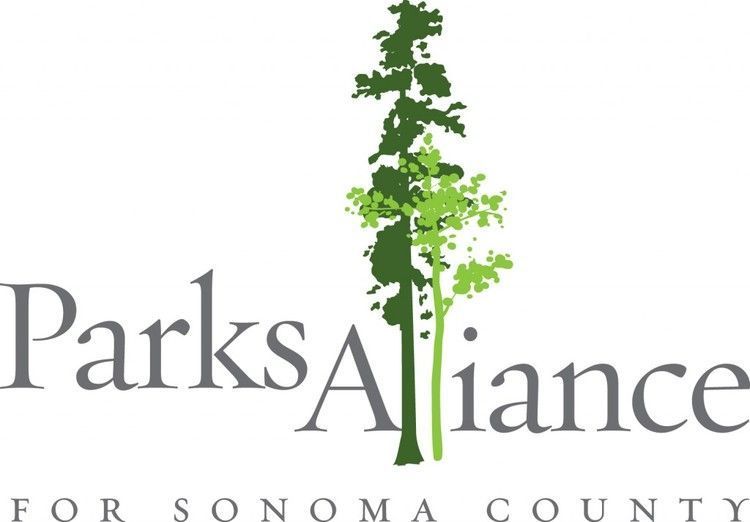 Four of the five state parks in Sonoma County that are facing closure at the end of June are making good progress toward remaining open in the hands of local groups instead, and there's hope for the fifth one as well. An update on the status of the threatened state parks in Sonoma County.
Four of the five state parks in Sonoma County that are facing closure at the end of June are making good progress toward remaining open in the hands of local groups instead, and there's hope for the fifth one as well. An update on the status of the threatened state parks in Sonoma County.
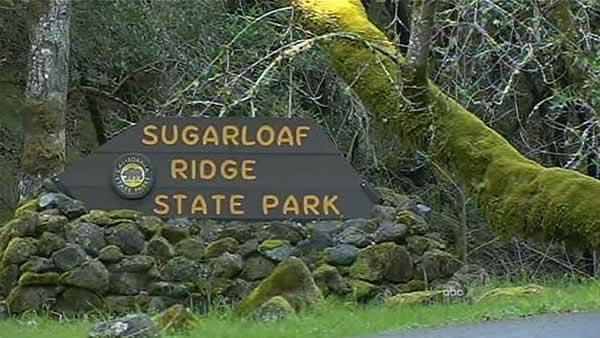 Out of the 70 state parks facing budget-driven closure at the end of the current fiscal year, all but 15 are in Monterey County or further north. Lauren Dixon is the Deputy Director of the Parks Alliance for Sonoma County notes that many are in remote locations, with limited populations nearby, and few have mustered the kind of organized local support and advocacy that is being demonstrated in Sonoma County to persuade State Parks there is a viable alternative to shutting the parks' gates.
Out of the 70 state parks facing budget-driven closure at the end of the current fiscal year, all but 15 are in Monterey County or further north. Lauren Dixon is the Deputy Director of the Parks Alliance for Sonoma County notes that many are in remote locations, with limited populations nearby, and few have mustered the kind of organized local support and advocacy that is being demonstrated in Sonoma County to persuade State Parks there is a viable alternative to shutting the parks' gates.
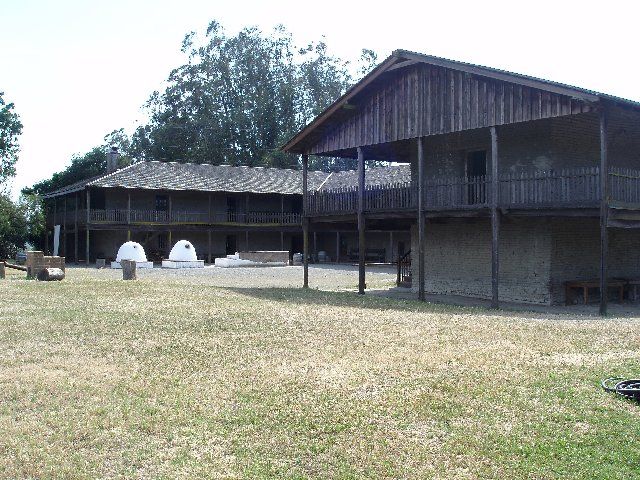 Money, or the lack of it, is what is driving the threatened park closures. So it is fitting, Dixon says, that the efforts to keep the Petaluma Adobe open have likewise focused on finances.
Money, or the lack of it, is what is driving the threatened park closures. So it is fitting, Dixon says, that the efforts to keep the Petaluma Adobe open have likewise focused on finances.
The deadline for new deals to keep each park open is technically June 30, but Dixon points out that there are compelling reasons to get those agreements finalized as soon as possible.


It's not enough to preserve both types of habitat, Cook continues. They must also be connected. Right now one of the greatest threats to the salamanders is the traffic they must get through when migrating from their upland burrows to the low wetlands where they breed.

 The tunnels can protect the slow-moving salamanders from the much-faster traffic on county roads, but the small amphibians are still at risk from multiple other animals, Bain adds.
The tunnels can protect the slow-moving salamanders from the much-faster traffic on county roads, but the small amphibians are still at risk from multiple other animals, Bain adds.
 In centuries past, it helped the Indians of the Amazon basin feed their people for hundreds, maybe even thousands of years before the first Spaniards arrived. Now bio-char could help the 21st century world curtail a major cause of global climate change.
In centuries past, it helped the Indians of the Amazon basin feed their people for hundreds, maybe even thousands of years before the first Spaniards arrived. Now bio-char could help the 21st century world curtail a major cause of global climate change.
 The key to the benefits of biochar, explains Raymund Gallian of the Sonoma Biochar Initiative, lies in the chemical process of partial combustion.
The key to the benefits of biochar, explains Raymund Gallian of the Sonoma Biochar Initiative, lies in the chemical process of partial combustion.
 Although it was only discovered in the past few decades, biochar was actually invented, as much as thousands of years earlier, by the native people of the Amazon basin.
Although it was only discovered in the past few decades, biochar was actually invented, as much as thousands of years earlier, by the native people of the Amazon basin.
 Sonoma County and the Sonoma Biochar Initiative are taking a lead role in exploring the modern uses of biochar, which Gallian says is only appropriate, given this area's progressive response to concerns over climate change.
Sonoma County and the Sonoma Biochar Initiative are taking a lead role in exploring the modern uses of biochar, which Gallian says is only appropriate, given this area's progressive response to concerns over climate change.
 California voters will have their first experience with the new Top Two primary election process in June. But even those who supported that change, by enacting Prop 14 two years ago, may be surprised by the realities of the new system in practice.
California voters will have their first experience with the new Top Two primary election process in June. But even those who supported that change, by enacting Prop 14 two years ago, may be surprised by the realities of the new system in practice.
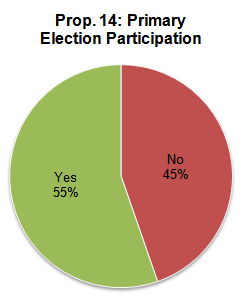 2010 Election ResultsA strong majority of California voters supported Proposition 14 in 2010, but there was more to adopting the new Top Two primary system than was included in the ballot measure. Richard Winger, editor of the San Francisco-based Ballot Access News, explains that many of the details of the new voting procedures were actually adopted by the state legislature, which he feels didn't give a lot of thought to what they were doing.
2010 Election ResultsA strong majority of California voters supported Proposition 14 in 2010, but there was more to adopting the new Top Two primary system than was included in the ballot measure. Richard Winger, editor of the San Francisco-based Ballot Access News, explains that many of the details of the new voting procedures were actually adopted by the state legislature, which he feels didn't give a lot of thought to what they were doing.
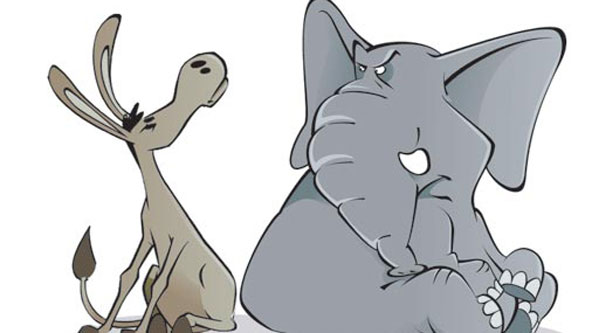 Advocates for Proposition 14 argued that it would help ease partisan legislative gridlock in Sacramento. But Winger says there is little evidence to support that claim. Even in the states with the highest degree of political polarization, researchers have not been able to establish any correlation to their primary election methods.
Advocates for Proposition 14 argued that it would help ease partisan legislative gridlock in Sacramento. But Winger says there is little evidence to support that claim. Even in the states with the highest degree of political polarization, researchers have not been able to establish any correlation to their primary election methods.
 While Americans were celebrating Valentines Day earlier this month, pro-Democracy demonstrators in the small Arab nation of Bahrain were observing the one-year anniversary of their protests. A Santa Rosa peace activist had hoped to be there for the occasion, too, but her visit was cut short by government forces.
While Americans were celebrating Valentines Day earlier this month, pro-Democracy demonstrators in the small Arab nation of Bahrain were observing the one-year anniversary of their protests. A Santa Rosa peace activist had hoped to be there for the occasion, too, but her visit was cut short by government forces.
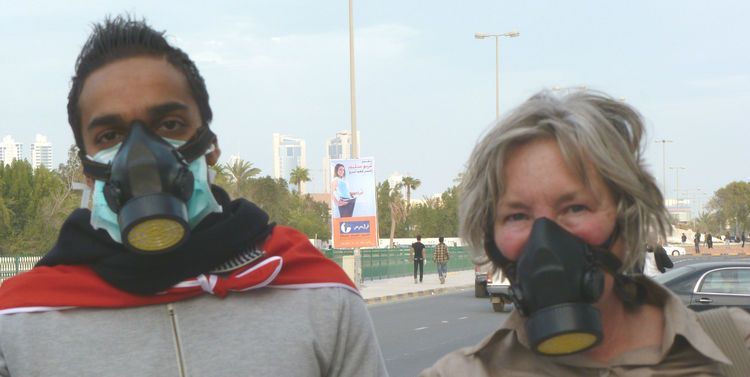 Linda Sartor (right) and a Bahraini demonstrator named Ahmend don gas masks before venturing out near a protest site.As has been the case in other "Arab Spring" nations, explains Santa Rosa human rights activist Linda Sartor, the unrest in Bahrain is being driven by a majority population that has been controlled and repressed by the minority that has held power for many generations.
Linda Sartor (right) and a Bahraini demonstrator named Ahmend don gas masks before venturing out near a protest site.As has been the case in other "Arab Spring" nations, explains Santa Rosa human rights activist Linda Sartor, the unrest in Bahrain is being driven by a majority population that has been controlled and repressed by the minority that has held power for many generations.
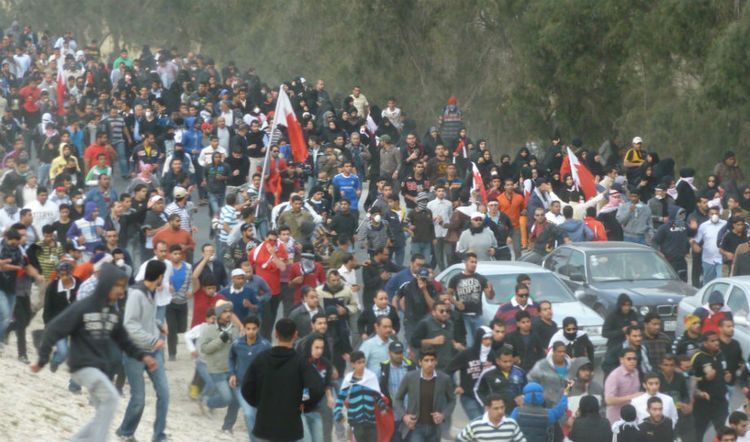 A throng of protesters march toward the demolished Pearl Roundabout on Feb. 13. Photos courtesy of Linda Sartor.On their first day in Bahrain, two members of the international group took part in a high-profile demonstration and were promptly arrested. It was that event, she believes, that led to her own arrest and deportation a few days later. The website created by those first detainees is WitnessBaharin.org.
A throng of protesters march toward the demolished Pearl Roundabout on Feb. 13. Photos courtesy of Linda Sartor.On their first day in Bahrain, two members of the international group took part in a high-profile demonstration and were promptly arrested. It was that event, she believes, that led to her own arrest and deportation a few days later. The website created by those first detainees is WitnessBaharin.org.
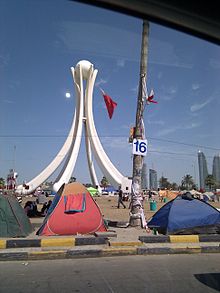 The landmark Pearl Roundabout in central Manama was the site of the first wave of pro-democracy demonstrations in Bahrain (seen here). It has since been leveled and cordoned off by the government.Even on the roads and highways around the capital city of Manama, Sartor reports, there is audible evidence of the ongoing protests.
The landmark Pearl Roundabout in central Manama was the site of the first wave of pro-democracy demonstrations in Bahrain (seen here). It has since been leveled and cordoned off by the government.Even on the roads and highways around the capital city of Manama, Sartor reports, there is audible evidence of the ongoing protests.
Previous North Bay Reports have covered both Linda Sartor's 2011 peace-making trip to Afghanistan, and an internal view of the pro-democratic uprising in Bahrain.

 Live Radio
Live Radio